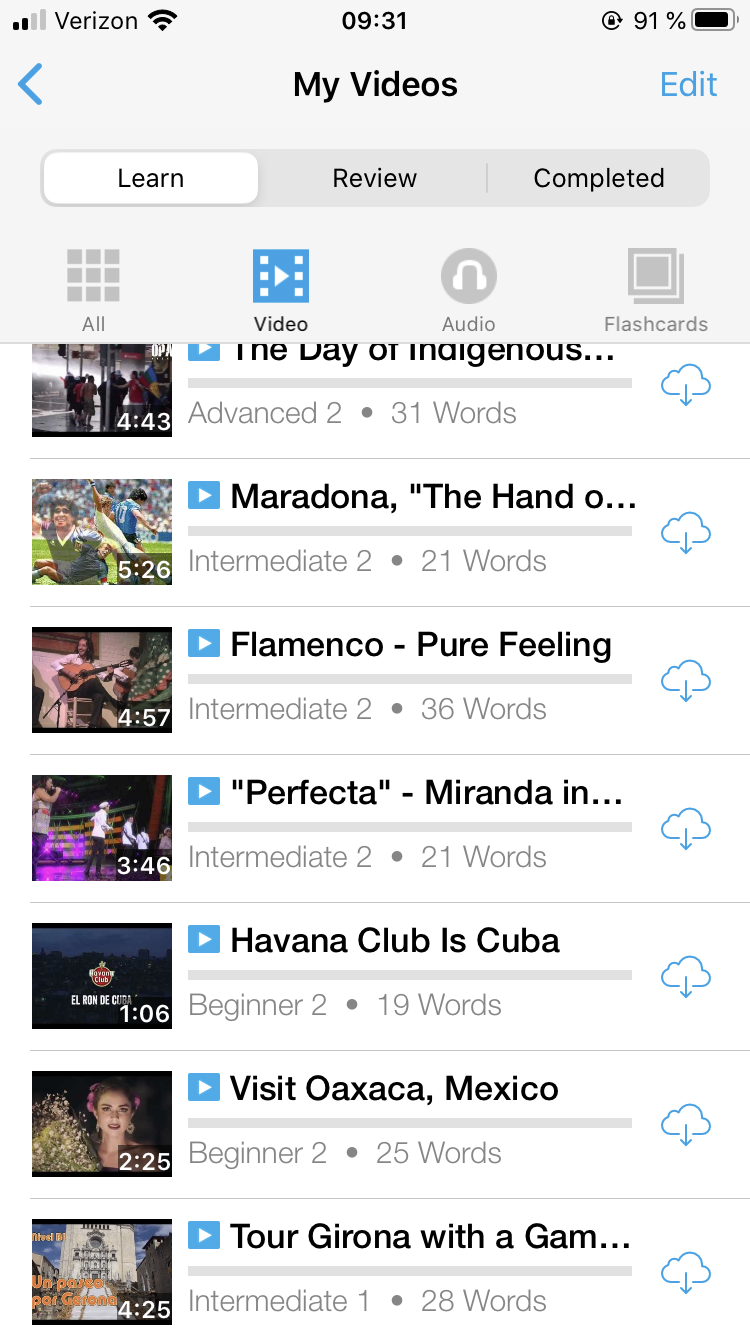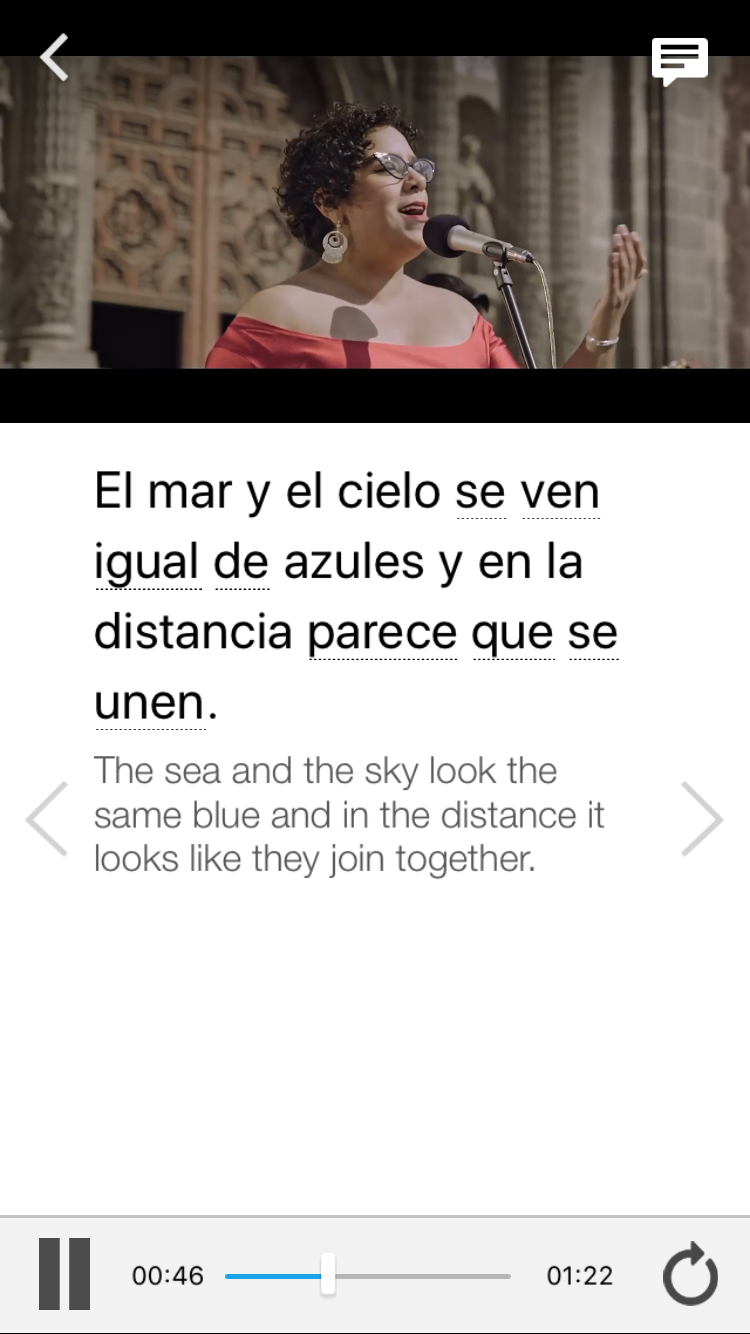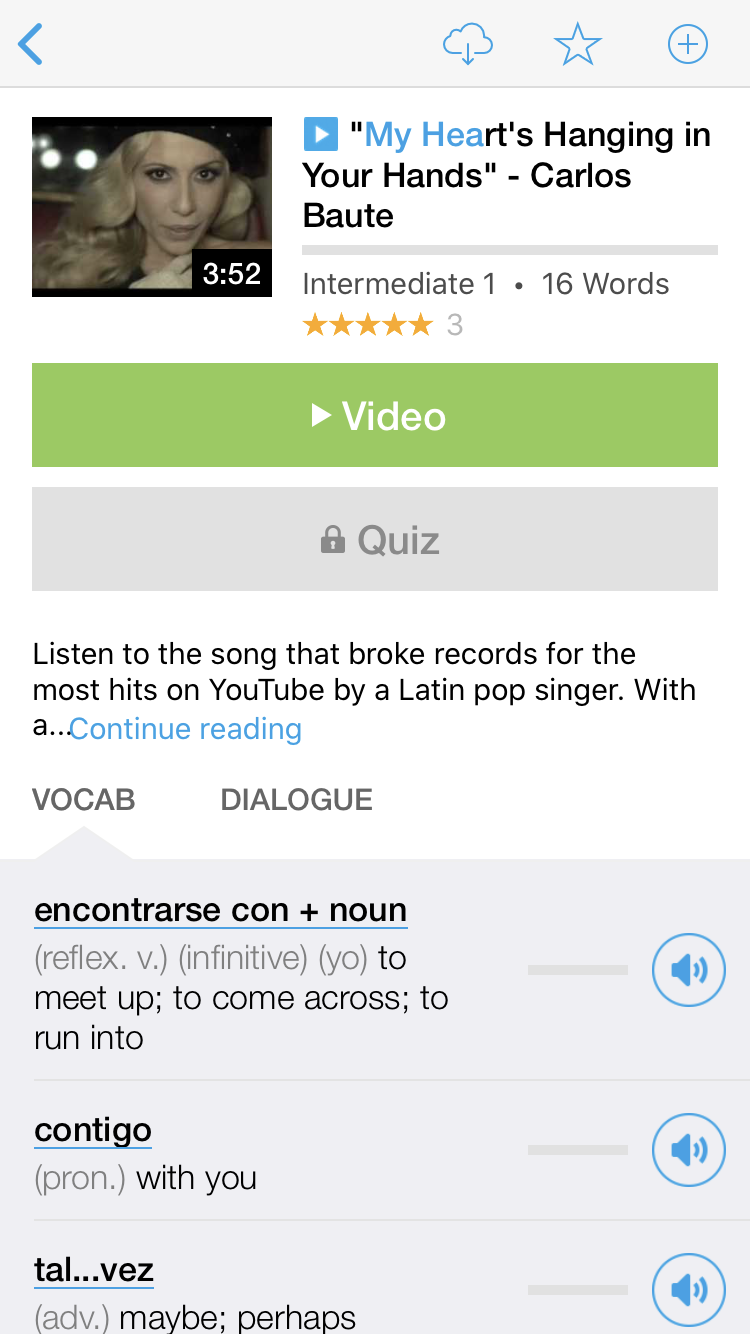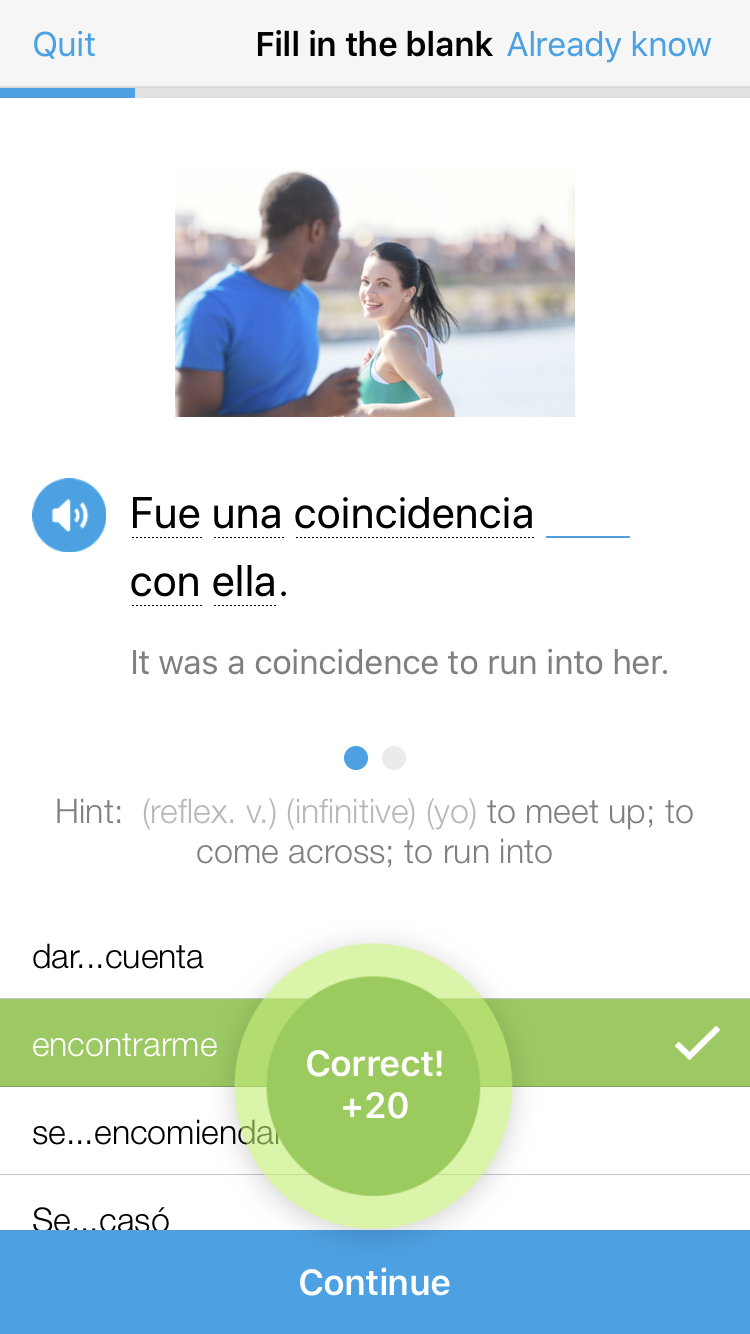
College is an amazing opportunity to learn Spanish that you don’t want to pass up. You have access to expert teachers in a supportive learning environment that’s hard to find elsewhere.
But it’s also a challenge to juggle Spanish practice with your other courses and activities, especially if you’re just getting used to college life.
Our six tips will show you how to learn Spanish in college effectively—so that you get good grades, of course, but also so that you build long-lasting language skills that go way beyond the textbook.
Contents
Download:
This blog post is available as a convenient and portable PDF that you
can take anywhere.
Click here to get a copy. (Download)
1. Resist the Urge to Skip
The simplest thing you can do on your way to an A is to attend your Spanish class and listen carefully to your professor.
Sure, this is true for every class you’re signed up for, but it’s especially important when it comes to language learning. Class time is your time to hear an expert speaking Spanish and practice with your classmates. That’s not something you can replace by borrowing a classmate’s notes.
New Spanish students are often intimidated by hearing a foreign language and they shut down, but the more you hear, the more familiar it becomes. Keep in mind that your professor’s job is to teach and that you’re in a beginner’s course, so the Spanish lessons are going to be simplified, anyway.
This rule also applies to paying attention to class lessons and following along with the required readings. Beginning Spanish lessons aren’t as difficult as you’d think. They’re not designed to stump you. They’re made to help you retain and understand the language. Follow along with the professor when you’re in class and don’t be afraid to ask for assistance.
Finally, you might not think I’d need to say it, but stay awake in class. Some Spanish material is dry, especially the medieval literature that’s on many college curricula. So make sure you get a good night’s sleep before class so you can stay focused and receptive to the language (and avoid angering your professor—I still have nightmares about my Spanish teacher calling me out in class for daydreaming about Mediterranean beaches, instead of focusing on “Celestina”…)
2. Participate in Class
Without a doubt, a portion of your grade will be centered on class participation. The participation part of your grade will involve answering questions, asking questions, speaking Spanish and, as we’ve just discussed, simply showing up to class.
But participating in class isn’t just about getting that A (although that’s important!). It’s also the only way to ensure that you come out of your Spanish class with solid language skills that you can build on.
If you’re intimidated at first, start small. Set a goal of raising your hand to answer a question in Spanish once per class. That’ll be more than many of your classmates! Ramp it up as you get more comfortable.
And remember, everyone makes mistakes when learning a new language. You’ll probably feel self-conscious about your accent or grammar at first, but so do all your classmates! Participating anyway is how you get those mistakes corrected and go from beginner to Spanish speaker.
All that said, if you want to curb silly mistakes, there are a few things you can do outside of class to avoid them.
- Try recording yourself speaking in Spanish at home, so you can listen, repeat and re-record. Any Spanish material will do, like one of your assigned readings or even just an email from your professor. You can use Spanish audio tools such as various apps and the Forvo website to check your pronunciation.
- Try out an online Spanish language exchange. No matter how crazy your school, work and extracurricular schedule is, you’ll likely be able to find at least 15 minutes for a chat with a Spanish language partner between class sessions.
- Don’t forget about your professor’s office hours. Professors schedule set hours when they’re in their offices to provide extra help for their students. Professors also remember the students that visit them and it shows they’re committed to learning Spanish.
3. Invest in a Pocket Dictionary (Or Check One Out from the Library)
An indispensable tool for learning Spanish is a quality Spanish dictionary. Your professor may specifically recommend one for you or even require it on the syllabus.
That’s because a Spanish dictionary is a powerful vocabulary learning tool that goes beyond basic word meanings or translations. You’ll also get grammatical information, synonyms, examples and more so that you can be sure you’re choosing the right word for any given context.
Not only is this invaluable for completing your Spanish homework, but you’ll also naturally encounter a range of related words as you browse your dictionary. So you won’t just be filling in blanks to get a passing grade, but you’ll actually sustainably grow your Spanish vocabulary.
Would you believe me if I told you that you could even bring your dictionary to class—and your professor wouldn’t mind? Many even encourage it because it ensures that you’ll be communicating in Spanish rather than falling back on English. Just email or ask your professor to confirm when you can have a dictionary on hand during class (they might require you to leave it at home on test day, for example).
For those of us living on ramen and peanut butter sandwiches, you can count on your university library to have a pocket Spanish dictionary available to borrow. You can also find a number of free or cheap digital Spanish dictionaries to keep on your phone. FluentU, for example, has a contextual dictionary that’s embedded into its videos, allowing you to check definitions on the fly.
4. Never Use Translation Tools to Write Your Essays
Never, ever use online translation tools or apps to write your essays! It may be tempting, especially in the era of online tools powered by AI (Artificial Intelligence). While writing a Spanish essay is challenging for new learners, writing one with translation tools is even worse.
Why?
The answer is that some translation services can be notoriously inaccurate. They may provide awkward grammar structures or words and phrases that native speakers would never use. Since you’re learning the language, you probably wouldn’t be able to tell the difference. Or they’ll use verb tenses that your professor hasn’t even taught yet, which will raise his or her eyebrows.
If you avoid translation tools from the start, you’ll avoid bad habits throughout the course of your Spanish learning journey. You’ll discover how to create Spanish sentences from scratch using the grammar and words that you actually know, which is the only way to prepare for real-world Spanish conversations.
So what should you do instead when you’re not sure how to say something in Spanish?
The art of circumlocution is important here. Ever played the game Taboo? Circumlocution is kind of like that. You use the base vocabulary words that you know to describe the word you need. So, if you were writing a personal essay in Spanish and didn’t know the specific word for “step-sister,” you could write something like “the daughter of my mom’s new husband.”
Finally, if there’s a very specific word that you need but don’t know, use a translation tool for only that one word, and confirm it with your Spanish dictionary.
5. Use Spanish Kids’ Media for Your Homework Breaks
If you need some confidence and ego-boosting while you learn Spanish, then check out children’s entertainment. In general, watching Spanish TV, shows, movies and YouTube videos is a tried-and-true method for learning the language. The content is meant for children, so it’s much easier to understand than more mature content.
There’s another great thing about Spanish TV and movies for children: they’re very fun. Think of it this way. You’ve been hitting the books for hours and you want a break. The only problem is that you don’t want to end your Spanish studying streak. Spanish kids’ content is the perfect way to relax your mind without going back to English mode.
It’s fun, there are catchy songs, you pick up a lot of vocabulary words and you feel incredibly smart. Plus, kids’ shows and movies are famous for being nice and happy. When you feel happy about learning Spanish, you’ll retain more knowledge!
You probably won’t be able to start this from day one of your Spanish class, but after attending for a few weeks, listening to your professor, completing your homework and reading your textbook, you should have some basic comprehension skills. In other words, your Spanish is the equivalent of a child’s, so use the same tools as the kids!
6. When In Doubt, Revert to Basic Study Methods
If at any time you’re in doubt about your Spanish capabilities, revert to the good old reliable study methods. These may be methods that you associate with more concrete academic subjects, like when you had to memorize the periodic table, but they’re just as useful for learning Spanish language concepts.
- Flashcards: These are especially useful for memorizing Spanish verb conjugations, but of course, you can also use them to memorize your vocabulary word list.
With flashcards, you only need yourself and some time. By repetitively drilling your Spanish flashcards, you can pick up new Spanish words quickly and recall them.
- Study groups: When you work with others, the language becomes more engaging and meaningful. You and your classmates can coach one another, review homework or simply get some extra conversation practice.
- Extra credit: It never hurts to ask your professor if you can do any extra credit assignments to pad out your grade. Usually, these are available to the entire class, but if your teacher didn’t think about allowing extra credit and you inspire him or her, the entire class will love you!
Learning Spanish for the first time in college can be daunting. So apply yourself to homework, read the texts and participate in class, and you’ll be well on your way to earning an A.
Once your skills start to impress your professor and classmates, you may find yourself coaching others on how to learn Spanish in college!
Download:
This blog post is available as a convenient and portable PDF that you
can take anywhere.
Click here to get a copy. (Download)
And One More Thing…
If you’ve made it this far that means you probably enjoy learning Spanish with engaging material and will then love FluentU.
Other sites use scripted content. FluentU uses a natural approach that helps you ease into the Spanish language and culture over time. You’ll learn Spanish as it’s actually spoken by real people.
FluentU has a wide variety of videos, as you can see here:

FluentU brings native videos within reach with interactive transcripts. You can tap on any word to look it up instantly. Every definition has examples that have been written to help you understand how the word is used. If you see an interesting word you don’t know, you can add it to a vocab list.

Review a complete interactive transcript under the Dialogue tab, and find words and phrases listed under Vocab.

Learn all the vocabulary in any video with FluentU’s robust learning engine. Swipe left or right to see more examples of the word you’re on.

The best part is that FluentU keeps track of the vocabulary that you’re learning, and gives you extra practice with difficult words. It’ll even remind you when it’s time to review what you’ve learned. Every learner has a truly personalized experience, even if they’re learning with the same video.
Start using the FluentU website on your computer or tablet or, better yet, download the FluentU app from the iTunes or Google Play store. All annual subscriptions now on sale!



